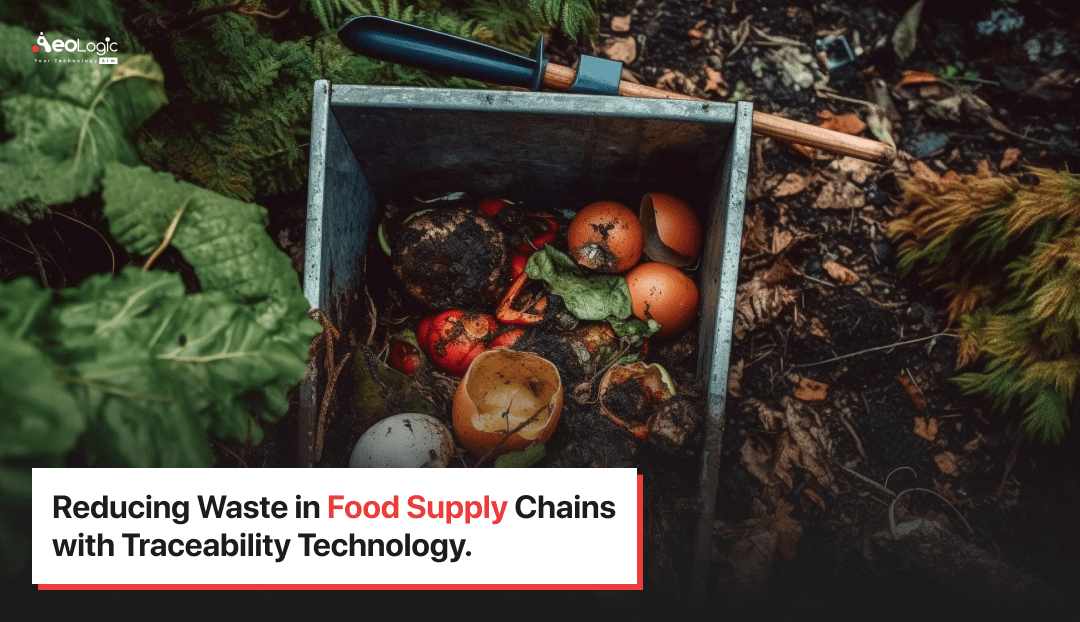The food industry is one of the most important industries, as this industry feeds the world by various means. This industry is not only important in terms of feeding the world but also has an important impact on global market size. Revenue in the food market is projected to reach US$834.90bn in 2025. Revenue is expected to show an annual growth rate (CAGR 2025-2029) of 10.08%, resulting in a projected market volume of US$1,226.00bn by 2029. With a projected market volume of US$349.20bn in 2025, most revenue is generated in China.
Undoubtedly, this industry is feeding a large quantity of people, but still, there are many aspects in this industry that need to be managed more efficiently. Food waste is a major concern worldwide, as this happens due to the unavailability of food in the right place. Many people in various regions cannot get the food, and this increases the wastage due to the presence where it is not needed. Some stats show that one-fifth of food produced for human consumption is lost or wasted globally. This amounts to one billion meals a day.
The global economy’s total cost of food loss and waste is estimated at roughly US$1 trillion. Where in the United States, food waste is estimated at between 30-40 percent of the food supply.
The Growing Need for Traceability in the Food Export Market
The waste production is generally the result of wrong food supply chain management that needs to be cured as soon as possible. Since this world has developed so many technologies and tools, many organizations have implemented traceability solutions to reduce the wastage of food. Traceability solutions powered by blockchain, IoT devices, RFID tags, sensors, etc., are playing a very important role in the food supply chain. Traceability allows food organizations to trace start-to-end operations in the supply chain that provide insightful data for making decisions. Real-time visibility, risk mitigation, improved decision-making, inventory management, etc., with the traceability technology, improve the food supply chain and overall reduce the waste.
The global food traceability market is expected to be valued at $25.74 billion in 2025. This is a compound annual growth rate (CAGR) of 10.4% from 2024. Where the global traceability market size is expected to be $25.74 billion in 2025 for food traceability and $32.68 billion for compliance and traceability solutions.
We have thoroughly reviewed the introduction and will now move on to some additional details. We will discuss some key benefits and potential challenges of traceability technology for the food supply chain. After all this discussion, we will conclude the topic with a concluding paragraph.
Also Read: Top Benefits of Implementing Traceability Solutions
What is Traceability Technology in Food Supply Chain?
Traceability technology for the food industry generally refers to a system that records food items and their ingredients along the supply chain. This helps locate products in the event of contamination or recalls and determines the origin of food. Traceability generally occurs through various solutions, such as blockchain, IoT, sensors, RFID tags, etc. These solutions or devices enable the tracing and tracking of every operation along the supply chain and record data where wastage occurs the most.
Benefits of Traceability Technology for the Food Supply Chain in Reducing Waste
We have seen various details and stats; now, it’s time to examine some of the benefits of traceability technology for the food supply chain, specifically its ability to reduce waste. Below are a few key benefits.
1. Expiration tracking
The expiry date is necessary to be known for the food industry, as not having detailed expiry data can lead to extra storing of food that results in wastage. With traceability technology, it is possible to track the expiry date, allowing retailers and suppliers to take action before items are wasted. Basically, an alert message or notification popup to the system that the specific food is going to expire very soon.
2. Just-in-time inventory implementation
Just-in-time is an inventory management technique that refers to the availability of resources just in time for when they are needed. With traceability technology, it is possible to implement just-in-time techniques in the food supply chain that ensure the availability of food products when they are needed. This reduces the storing of food products that overall reduces the wastage of food in the food industry.
3. Cross-channel distribution
Cross-channel distribution is another very efficient technique to reduce the wastage of food, as in this technique, a business transfers the unsold food product to another store where demand is high. Traceability solutions can trace the data about demands of every food product that prevent food waste by moving food products from the low-demand area. This technique is a great way to reduce wastage of food.
4. Early detection of problems
Food products are like contagious types, as small defects can affect the whole supply chain. Traceability powers the supply chain can detect issues in the initial stage and helps organizations to remove them before causing too much damage. This not only reduces wastage in the food industry but also provides quality food products to the consumers that are overall beneficial for their health and the organization’s reputation.
5. Food donation programs
Food donation programs can be another method that can enhance traceability technology in the food industry. Traceability technology can integrate with businesses to initiate food donation programs. This enables the donation of food that is near expiration but safe to eat. This reduces the wastage of food and reduces the hunger of many people.
Also Read our trending blog: Traceability Solutions for Supply Chains with Examples
Challenges with Traceability Solutions in Implementing Food Supply Chains
We have seen various benefits, but there are a few challenges too with the traceability technology while implementing food supply chains. Here are a few challenges mentioned below.
Lack of End-to-End Traceability
One of the most major obstacles for food exporters is the lack of end-to-end traceability. This occurs when information regarding a product is dispersed throughout multiple phases of the supply chain, implying that one part of the process may include detailed data while another does not.
For example, a farm may keep data on the crops it produces, but that information may not always make it to the processing factory, and it may not even reach the distributor. This results in incomplete or missing data, making it impossible to trace the product’s path in the event of a recall or quality issue.
Having fragmented data also makes it far more difficult to respond swiftly to consumer or regulatory inquiries concerning a product’s origin, handling, or safety. The more isolated the supply chain, the greater a company’s risk of noncompliance and operational inefficiencies.
Risks of Incomplete Records
Another significant difficulty in food traceability is the absence or incompleteness of records. Data errors, missing documents, or human error can occur at any stage along the supply chain. When this occurs, it becomes extremely difficult—if not impossible—to prove the origin, handling, and safety of a product.
This is especially risky when it comes to global standards requiring evidence of food safety, ethical sourcing, and sustainability. A missing batch number or an incomplete shipment record may result in non-compliance and the inability to verify that the product fulfills the required specifications. The implications can be both financial and reputational.
Key Challenges:
- Traceability technology generates a vast amount of data that can sometimes result in data overload.
- Manual data entry in traceability technology can result in some human mistakes. This could result in wrong data insight production.
- Advancement in traceability technology can result in cyberattacks, as traceability integration with clouds can attract cyberattackers.
Also Read: Challenges and Opportunities in the Traceability of Medicinal Products
How RFID Technology Solves Food Export Traceability Challenges
RFID Solutions helps solve big problems in food export traceability. It uses RFID tags to track products at every step of the supply chain. These tags store key details like origin, batch number, and storage conditions. Scanning is quick and automatic, which avoids manual errors. RFID also monitors the temperature for sensitive goods like seafood and dairy. This ensures food stays safe and meets global rules. Aeologic makes it easier for exporters to use RFID, improve transparency, and build trust with buyers worldwide.
Key Benefits of RFID Technology:
- Real-time Tracking: Quickly track food products through the entire supply chain.
- Improved Accuracy: Automatic data collection reduces human errors.
- Compliance Ready: Ensure products meet international safety and quality standards.
Also Read: What is Traceability and Its Challenges in Industry
Final Thoughts
Traceability technology has been implemented by various industries that are powered by various solutions like blockchain, IoT, RFID, etc. This technology has also reached the food industry to manage the supply chain efficiently. One of the most important benefits of traceability is reducing food wastage.
There are many benefits and use cases to reduce food wastage with traceability technology like expiration tracking, just-in-time implementation, cross-channel distribution, food donation programs, etc. While there are few challenges too, such as data overload, manual data entry mistakes, cyberattacks, etc., the benefits are too good from challenges. We can say, traceability technology can improve the efficiency of the food industry. Also, reduces the wastage throughout the supply chain in a efficient manner.







